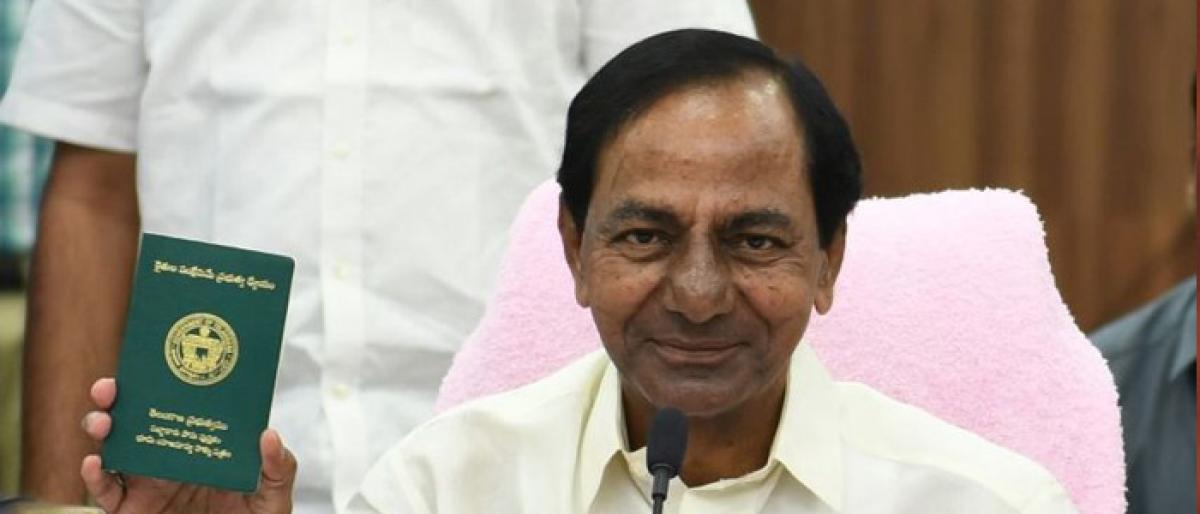Live
- A Guide to Temperature and Humidity Standards in Data Center Server Rooms
- Gadwal collector briefs on details of voters
- Jupally Krishna Rao takes part in Alampur rallu
- Bharath Prasad files 3rd Nomination
- Baisakh Month: A Time of Auspicious Beginnings and Sacred Festivals
- Oust BJD govt for overall development, says Shah
- Unveiling the Hidden Gems: Surprising Health Benefits of Garlic Peels
- Overcoming Sleep Struggles: A Comprehensive Guide to a Restful Night
- RTC bus hit the auto
- MLA Kuchukula Rajesh Reddy participated in the Birappa festival
Just In
CM to lay foundation stone for Kakatiya Mega Textile Park in Warangal today


Chief Minister K. Chandrashekhar Rao will lay the foundation stone for Kakatiya Mega Textile Park (KMTP) in Warangal on Sunday.
Hyderabad : Chief Minister K. Chandrashekhar Rao will lay the foundation stone for Kakatiya Mega Textile Park (KMTP) in Warangal on Sunday.
The KMTP project will set up by the Telangana State Industrial Infrastructure Corporation (TSIIC) for which IL&FS Cluster Development Initiative (IL&FS Clusters) has been engaged as Project Consultant. The project is located in Warangal, which is a major cotton producing district and trading centre in the State. The region has a strong presence of Textile clusters (Warangal Durries) and skilled manpower. The proposed Project envisages ploughing back economic benefits of the Park to the local populace by catering to all activities in the Textile value chain.
The proposed KMTP will be implemented in a phased manner depending on the market demand. Due to the large size of the Project, a long term strategy is being adopted for the complete implantation of KMTP. The phasing approach would not only help in ensuring sustainable development of the Park but also in ensuring availability of fabric, accessories and man power for 75% of sales value of garments
Telangana is one of the largest producers of long staple cotton with production of around 60 lakh bales per annum. The State stood at third position in the country in cotton production during the year 2015-16. The State is known for skilled Textile workers but due to absence of industry, they migrated to other states for their livelihood
There are 33 spinning mills with capacity of 10 lakh spindles, which consumes only about 20% of the cotton grown in the State with the rest 80% going to other states for spinning. Capacity utilization of weaving industry in the State is negligible and there is not much processing capacity available in the State. There is no further downstream facility like processing and garmenting
After bifurcation of the State, 75% of the pre-division cotton growing areas have remained in the State while only 20% of the pre-division spinning capacity remains in the State. Thus most of the cotton goes to neighbouring states for value addition, and so does the majority of the cotton yarn
The availability of high cotton production and labour force presents an immense potential to create large integrated Textile manufacturing capacities in the State. This will also support overall industrial development in the State along with value addition in the drive for job creation.

© 2024 Hyderabad Media House Limited/The Hans India. All rights reserved. Powered by hocalwire.com






